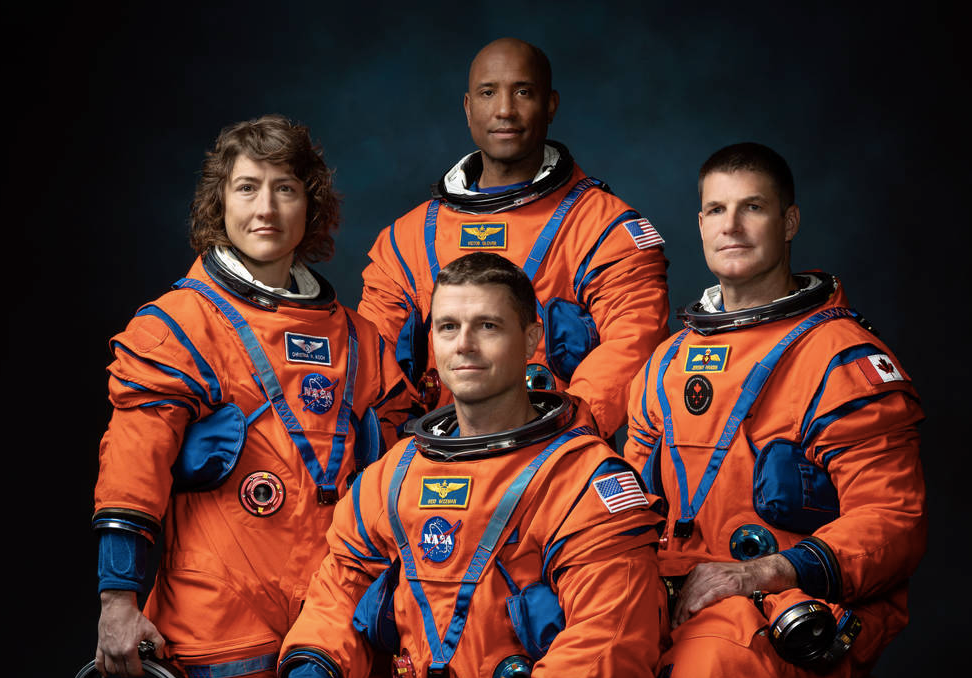|
Getting your Trinity Audio player ready...
|
NASA and the Canadian Space Agency (CSA) have announced the four astronauts who will be on board the Artemis II mission, the first crewed mission on NASA’s path to establishing a long-term presence on the Moon for science and exploration through Artemis.
This mission is part of NASA’s Moon to Mars exploration approach. The Artemis II crew members are Commander Reid Wiseman, Pilot Victor Glover, Mission Specialist 1 Christina Hammock Koch, and Mission Specialist 2 Jeremy Hansen. This article will look at the different roles of the astronauts on this mission and their experience in space.
The Artemis II crew will work together to execute an ambitious set of demonstrations during the flight test. This approximately 10-day flight test will launch on the agency’s powerful Space Launch System rocket, prove the Orion spacecraft’s life-support systems, and validate the capabilities and techniques needed for humans to live and work in deep space.
This flight will build upon the successful uncrewed Artemis I mission completed in December and will set the stage for the first woman and first person of color on the Moon through the Artemis program.
The Artemis II crew represents thousands of people working tirelessly to bring us to the stars. This is their crew, this is our crew, this is humanity’s crew.
said NASA Administrator Bill Nelson
NASA astronauts Reid Wiseman, Victor Glover, and Christina Hammock Koch, and CSA astronaut Jeremy Hansen, each has their own story, but, together, they represent our creed: E pluribus unum – out of many, one.
Together, we are ushering in a new era of exploration for a new generation of star sailors and dreamers – the Artemis Generation
Meet The Artemis II Astronauts
The four astronauts have different experiences in space. This will be Wiseman’s second trip into space, serving previously as a flight engineer aboard the International Space Station (ISS) for Expedition 41 from May through November 2014.
Wiseman has logged more than 165 days in space, including almost 13 hours as lead spacewalker during two trips outside the orbital complex. Prior to his assignment, Wiseman served as chief of the Astronaut Office from December 2020 until November 2022.
This will be Glover’s second spaceflight, serving previously as a pilot on NASA’s SpaceX Crew-1, which landed on May 2, 2021, after 168 days in space. As a flight engineer aboard the ISS for Expedition 64, he contributed to scientific investigations, and technology demonstrations, and participated in four spacewalks.
Koch also will be making her second flight into space on the Artemis II mission. She served as a flight engineer aboard the ISS for Expedition 59, 60, and 61. Koch set a record for the longest single spaceflight by a woman with a total of 328 days in space and participated in the first all-female spacewalks.
Representing Canada, Hansen is making his first flight to space. A colonel in the Canadian Armed Forces and former fighter pilot, Hansen holds a Bachelor of Science in space science from the Royal Military College of Canada in Kingston, Ontario, and a Master of Science in physics from the same institution in 2000, with research, focus on Wide Field of View Satellite Tracking.
He was one of two recruits selected by CSA in May 2009 through the third Canadian Astronaut Recruitment Campaign and has served as Capcom in NASA‘s Mission Control Center at Johnson and, in 2017, became the first Canadian to be entrusted with leading a NASA astronaut class, leading the training of astronaut candidates from the United States and Canada.
Significance Of The Artemis II mission
This mission is not only historic but also significant as the Artemis II crew members will be the first humans to fly to the vicinity of the Moon in over 50 years. Among the crew are the first woman, the first person of color, and the first Canadian on a lunar mission. The Artemis II mission paves the way for the expansion of human deep space exploration and presents new opportunities for scientific discoveries, commercial, industrial, and academic partnerships, and the Artemis Generation.
The Artemis program has ambitious goals, not only to land humans on the Moon but also to establish a sustainable presence there. The Artemis II mission will be a crucial step in achieving these goals, as it will test the Orion spacecraft’s life-support systems and validate techniques needed for humans to live and work in deep space. Moreover, the mission will serve as a precursor to the upcoming Artemis III mission, which is expected to land humans on the Moon’s south pole.
Artemis II will also be a significant milestone in Canadian space history. The participation of CSA astronaut Jeremy Hansen in the mission highlights the strong partnership between NASA and CSA, which has been ongoing for over 60 years. It’s worth mentioning that Canadian technology and expertise have contributed significantly to the success of previous NASA missions, such as the Canadarm and Canadarm2 robotic arms used on the Space Shuttle and the International Space Station.
Conclusion
In conclusion, the announcement of the Artemis II crew is a significant step towards achieving NASA’s ambitious goals of establishing a long-term presence on the Moon and eventually sending humans to Mars. The Artemis II mission will test crucial technologies and techniques needed for human deep space exploration.
The selection of the crew members is a testament to the diversity and inclusivity that NASA and CSA embrace in their pursuit of space exploration. With the Artemis II mission set to launch in the coming years, we can look forward to humanity’s next giant leap.
